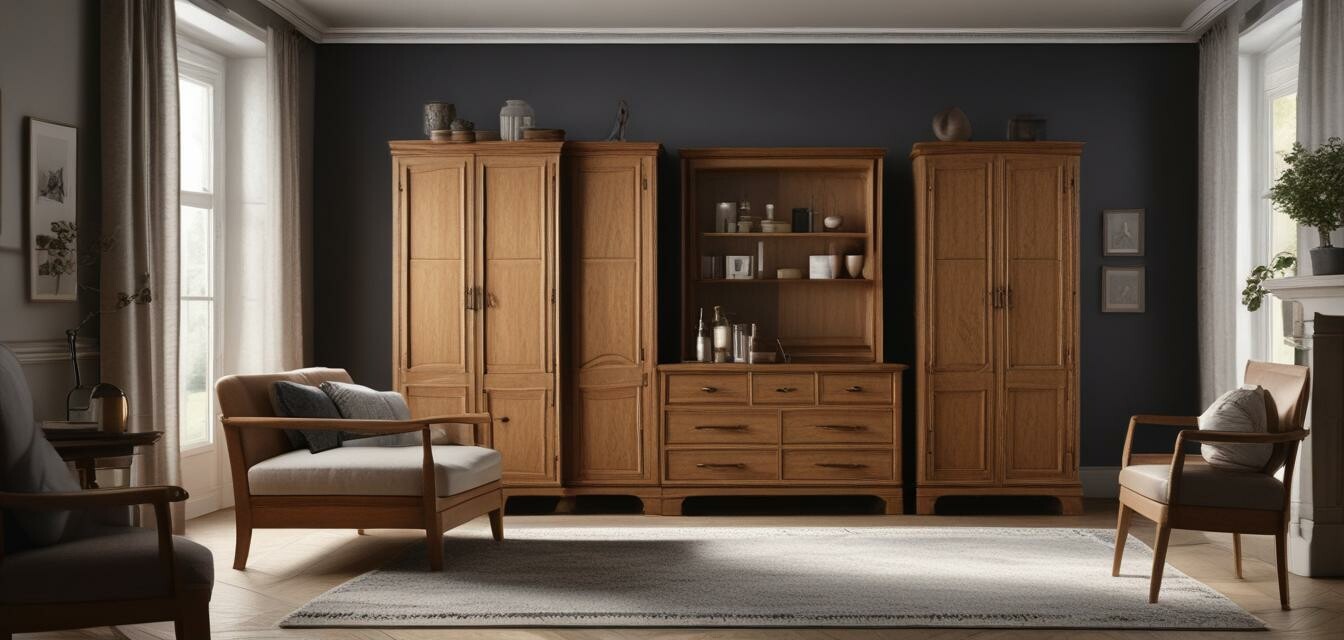
The Evolution of Solid Oak Furniture Styles Over the Decades
Key Takeaways
- Solid oak furniture has evolved significantly over the decades.
- Key styles include traditional, mid-century modern, and contemporary designs.
- Trends have shifted due to cultural influences, sustainability, and consumer preferences.
- The finishing techniques have played an essential role in enhancing the aesthetics.
- Maintaining the durability of oak furniture remains a high priority among consumers.
Solid oak furniture has a rich history that reflects not just the beauty of the wood but also the changing tastes and preferences of consumers over the decades. From the rustic charm of traditional designs to the sleek lines of contemporary aesthetics, each era has brought forth unique influences that have shaped solid oak furniture styles. In this article, we will explore these styles, detailing the evolution of design and craftsmanship that has made solid oak tables beloved worldwide.
Traditional Solid Oak Furniture (1920s - 1950s)
The early 20th century marked a time when traditional craftsmanship flourished. Furniture makers utilized solid oak for its durability and aesthetic beauty. Characterized by:
- Heavy, sturdy construction
- Intricate carvings and ornamentation
- Warm stains that enhanced the natural grain
Traditional styles were commonly found in dining rooms and living areas, providing a sense of permanence and strength. The emphasis was on unity with nature, which led to an appreciation for the organic appeal of oak.
Key Designs in Traditional Style
| Design | Features |
|---|---|
| Carved Oak Tables | Intricate designs, often with floral motifs. |
| Dresser Tables | Large surfaces with drawers, perfect for storage. |
| Country-style Tables | Rough-hewn edges that highlight the rustic charm. |
The Mid-Century Modern Influence (1950s - 1970s)
The post-war era brought significant changes to design philosophy. Mid-century modern furniture emphasized:
- Minimalist aesthetics with clean lines
- Functional designs that prioritize usability
- Light finishes that showcased the grain of oak
This period saw an appreciation for simplicity and natural materials that matched contemporary lifestyles. The popularity of solid oak continued, but its design became more about form and function rather than ornamentation.
Prominent Mid-Century Designs
| Design | Features |
|---|---|
| Scandinavian Tables | Sleek, functional styles with tapered legs. |
| Expandable Dining Tables | Versatile options for varying dining needs. |
| Simple Coffee Tables | Effortless designs focused on everyday use. |
Contemporary Styles (1980s - Present)
As we moved into the 1980s and beyond, the use of solid oak in furniture experienced a resurgence. The contemporary style is characterized by:
- Innovative designs that merge traditional and modern elements
- Bold finishes that can be lighter or darker, highlighting different wood grains
- Incorporation of multi-functional pieces in smaller living spaces
This period has also seen a growing emphasis on sustainability and eco-friendly production practices, appealing to a more conscious consumer base. The evolution of solid oak furniture reflects not only the changing tastes but also a renewed respect for responsible sourcing and artisanal craftsmanship.
Current Contemporary Designs
| Design | Features |
|---|---|
| Rustic Industrial Tables | Blend of raw wood and metal for an edgy look. |
| Modular Tables | Customizable designs for flexible living spaces. |
| Minimalist Dining Tables | Simple shapes with a focus on natural finish and texture. |
Emerging Trends and Future Directions
The solid oak furniture industry is continuously adapting to trends that focus on wellness, sustainability, and aesthetics. Here are some of the trends shaping the future of solid oak furniture:
- Eco-conscious sourcing of materials
- Increased customization options for personalization
- Combination of smart technology with traditional craftsmanship
As consumer preferences shift towards more sustainable living, designers are challenged to innovate while maintaining the intrinsic beauty of solid oak. The blending of modern technology with traditional techniques is leading to new and exciting possibilities for furniture design.
Pros
- Timeless appeal that suits various decor styles.
- Durability ensures longevity and value for your investment.
- Natural variations in wood grain provide unique aesthetics.
Cons
- Higher cost compared to manufactured wood alternatives.
- Requires maintenance and care to preserve its beauty.
- Can be heavy and difficult to move.
Conclusion
The journey of solid oak furniture styles over the decades illustrates a fascinating narrative of materials, craftsmanship, and design philosophies. Whether you lean towards the rustic charm of traditional furniture or the sleek aesthetic of contemporary designs, solid oak tables remain an exceptional choice. They provide stability and elegance, making them a centerpiece in homes today and for years to come.
To explore more about the types of tables available, be sure to check our Dining Tables, Coffee Tables, and Accent Tables. Additionally, visit our blog for helpful Buying Guides and exciting News and Trends in the world of solid oak furniture.